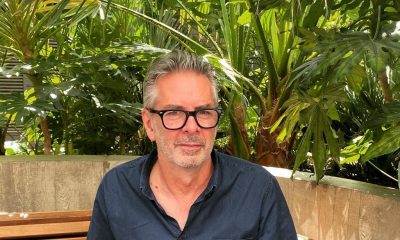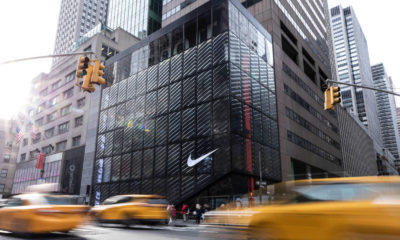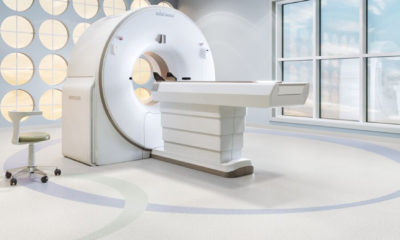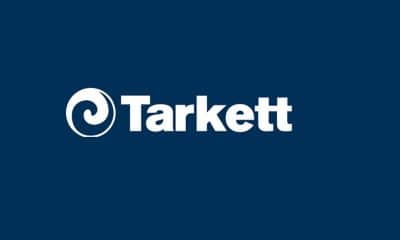(PRESS RELEASE) SOLON, OH — Tarkett, a worldwide leader in innovative and sustainable flooring and sports surface solutions, has released its 2020 Corporate Social & Environmental Responsibility (CSR) report. Fully audited by an independent third-party organization, KPMG, this report showcases the company’s ongoing sustainability performance.
“In the last ten years, we have achieved strong progress in sustainability. In many cases we have exceeded our 2020 objectives, developing circular economy initiatives, reducing our carbon footprint and eco-designing our products with healthy materials,” says CEO Fabrice Barthélemy. “Opening a second chapter in its sustainability strategy, Tarkett is leading the way in its industry. As part of our ‘Change to Win’ strategy, we invest in circular economy, and tackle our carbon footprint across the value chain. By building cohesive partnerships with customers, suppliers and leading players, we amplify our impact in making conscious choices for people and the planet. This approach will allow us to seize new opportunities of sustainable growth, and contribute to a global green recovery for present and future generations.”
Tarkett’s maturity in sustainability has been recently recognized by improved extra-financial ratings, both from the Carbon Disclosure Project (CDP climate rating: B – management level) and EcoVadis (platinum medal, the highest level of maturity in sustainability a company can reach).
“Following Cradle to Cradle principles has been instrumental in keeping our focus for product development on health and wellness, social fairness and responsible manufacturing,” said Roxane Spears, vice president, sustainability for Tarkett North America. “Following these guidelines has helped us create solutions that are not only Cradle to Cradle certified, but also CERTIFIED asthma & allergy friendly. These certifications provide our customers with transparency and a level of assurance as they use Tarkett products in their spaces. We will continue to grow our portfolio of third-party certified products, making healthier options more accessible across all market segments.”
Below are some of the key highlights form the report:
Tarkett ramps up its recycling program, by transforming end-of-use flooring and recycled materials into new floors, ultimately reducing waste and carbon footprint.
Advertisement
- 109,000 tons of flooring were collected between 2010 and 2020 as part of the company’s Restart take-back and recycling program in Europe, North America and Brazil.
- Nine recycling centers integrated into Tarkett’s production sites in eight countries are up and running.
- 13 percent of Tarkett’s raw materials (127,000 tons per year) were recycled materials in 2020. The goal is to reach 30 percent by 2030, versus 10 percent in 2018.
Tarkett reduces its carbon footprint.
- Tarkett decreased its greenhouse gas emissions by 27 percent between 2010 and 2020, going beyond its initial objective of 20 percent. The goal for 2030 is to reduce carbon footprint by 30 percent.
- Eight production sites in seven countries are sourcing 100 percent renewable electricity.
- Tarkett avoided 253,000 tons of C02e along the value chain thanks to the use of 127,000 tons of recycled materials, instead of using virgin raw materials and sending waste to incineration.[1] This represents more than the total amount of greenhouse gas emissions from the company’s production sites in 2020.
- Tarkett North America has partnered with Carbonfund to create the industry’s broadest portfolio of third-party verified carbon neutral flooring solutions. The certified Carbonfree portfolio includes all designs within these product categories: Powerbond, ethos Modular with Omnicoat Technology, rubber tile, rubber sports flooring, homogeneous sheet and tile, heterogeneous sheet and tile, and LVT collections manufactured in the USA. The
- 2.5mm LinoFloor collections are carbon negative.
Tarkett selects good materials as part its eco-design approach.
- Since 2010, Tarkett has partnered with the scientific institute Environmental Protection Encouragement Agency (EPEA) to apply Cradle to Cradle (C2C) principles throughout its activities. Now, 98 percent of the company’s raw materials—representing more than 5,000 materials—are third-party assessed for their impact on people’s health and the environment, based on C2C criteria.
- Tarkett has twenty C2C certifications, covering a wide range of product categories, including carpet, linoleum, rubber, wood, and artificial turfs. Five product collections have reached the Gold level, the most in the flooring sector.
Major recent examples illustrating Tarkett’s circular economy commitment:
- During the renovation of the Moscone Convention Center in San Francisco (USA), Tarkett recycled close to 70 tons of its cushioned carpet tile after 17 years of use. These materials were sent to the Tarkett recycling center in
- Dalton, Georgia, diverting it from landfill or incineration.
- At the Calhoun, Georgia carpet plant, the innovative ProMoss™ plant-based water treatment solution has been implemented to filter water in cooling towers, reduce the use of chemical products, reduce corrosion of equipment and thus lengthen the life of the installation. ProMoss™ uses the natural properties of Sphagnum moss to improve water quality by naturally removing and inhibiting the formation of organic contamination, effectively reducing corrosion.
- At our Dalton carpet site (US) the elimination of the jet dying processes brought significant energy, water and cost savings. An in-depth review of the existing dying process and an evaluation of alternative solutions found the jet dying process to be overly energy, water and labor intensive as well as generating significant volumes of wastewater. New, more efficient coloring processes are now used, either directly at our Calhoun extrusion site or, in some cases for some smaller volumes, at outsourced companies. The result has been an 86 percent reduction in water usage.

 Headlines6 days ago
Headlines6 days ago
 Headlines2 weeks ago
Headlines2 weeks ago
 Headlines1 week ago
Headlines1 week ago
 Headlines2 weeks ago
Headlines2 weeks ago
 John Ryan2 weeks ago
John Ryan2 weeks ago
 Sector Spotlight1 week ago
Sector Spotlight1 week ago
 Headlines2 weeks ago
Headlines2 weeks ago
 NEXT UX2 weeks ago
NEXT UX2 weeks ago





















